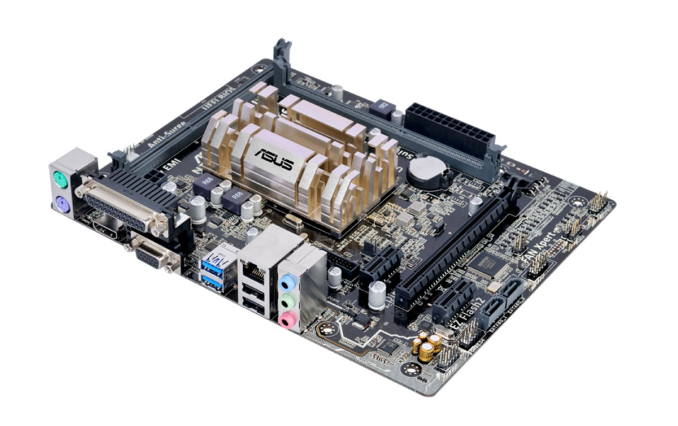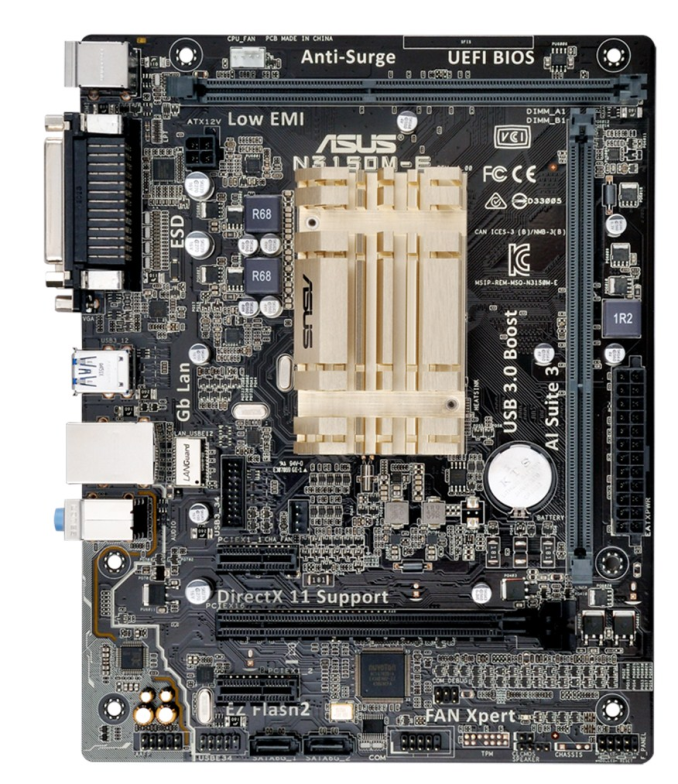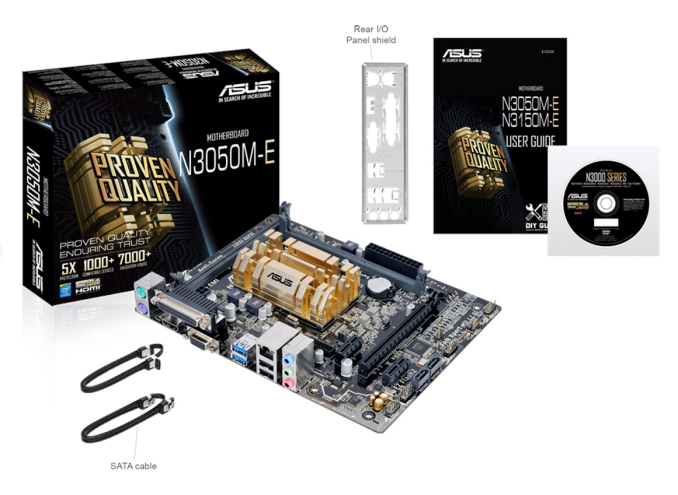Braswell Motherboard Surfaces Online: Quad Core 14nm Airmont in ASUS N3150M-E
by Ian Cutress on May 18, 2015 12:20 PM EST- Posted in
- Motherboards
- Asus
- MicroATX
- Airmont
- Braswell

When Intel initially released its Airmont platforms, Braswell for mini-PCs and Cherry Trail for tablets, it was unclear whether or not we would see custom desktop build equivalents, rather than just pre-built units. All the SoCs in the Braswell range were officially labelled as mobile parts, falling under the Celeron codename, for this reason. Intel has also recently released Xeon D, tackling the SFF space for enterprise use, but in the back of our minds we were always expecting an upgrade to the low-end Bay Trail motherboards with soldered down processors. Having already heard some news on the grapevine, ASUS is first to publicly display their motherboards online (well, one at first), albeit with no link through the main site and as a result this link was passed on to us by SH SOTN.
The N3150M-E is a micro-ATX motherboard with the Celeron N3150 processor built-in, and due to the 6W TDP being low enough, we also get a built in fanless heatsink. Braswell supports two DDR3L-1600 memory channels, and perhaps somewhat oddly we have them both here at right angles to each other. Online Intel lists the maximum memory compatibility for the CPU as 8GB, although the Beebox we reported on earlier is rated for 16GB so I would assume that the motherboard side of the equation should be able to do this too.
There is a full PCIe 2.0 x16 slot with x8 electrical (but might not offer more than x4 due to SoC limitations, and according to the spec sheet is only x1), allowing for those esoteric arrangements of Atom plus discrete graphics or just for an additional PCIe card, such as a RAID card for a storage platform. By default the N3150M-E gives two SATA 6 Gbps ports, a COM header, a USB 2.0 header and a USB 3.0 header. There are also two USB 3.0 ports on the rear, along with a Realtek network port and Realtek ALC887 audio. The audio solution is an upgraded one, with at least PCB separation between the audio channels and a couple of filter caps. Onboard video outputs are via a VGA and a HDMI connector, and we also get an LPT port for good measure.
The Celeron N3150 is a 14nm Airmont based quad core solution, featuring a 1.6 GHz base clock and a 2.08 GHz turbo. Onboard graphics are via Intel’s Gen8, with 12 EUs having a boost frequency of 600 MHz. Technically Brett has already had a quick review of Airmont cores in the Surface 3's Cherry Trail SoC, though it would be interesting to get a desktop variant in to see how the performance compares to previous desktop Atom units.
Source: ASUS, SH SOTN.
Update: It seems within a minute or two, ASUS has also posted the N3050M-E variant online as well. This uses the Celeron N3050, a dual core version with a 1.6 GHz base frequency but a turbo of 2.16 GHz.

















32 Comments
View All Comments
solarisking - Monday, May 18, 2015 - link
Why in holy hell is there a parallel port on this thing???nightbringer57 - Monday, May 18, 2015 - link
Probably for industrial-ish purposes, I guess?DanNeely - Monday, May 18, 2015 - link
That's probably the main reason; with being a cheaper way to fill out the IO panel to keep it from looking like it has a lot of wasted space than 4 or 6 modern IO ports being a secondary one.Significant - Monday, May 18, 2015 - link
The text says com-header, så it is a DB-25 serial-port connector. Very useful for many embedded applications.Mr Perfect - Monday, May 18, 2015 - link
Nope, the article says the back panel port is an LPT. A header is just a double row of pins on the PCB you can plug a cable into. If you look at the very bottom edge of the board, right in the middle, there's a header labeled COM.hrga - Tuesday, May 19, 2015 - link
Because they have nothing better to place on this board ;) Anyway this is ultrabudget SoC on premium rip-off price. And These kind of nettopPC are placed to be ubiquity in everyday life and most sys integrators still need that port rather than to waste space on some expansion gadgetry ... But most ludicrous thing are TWO DIMM SLOTS ... What Atoms still dont support 8GB DIMM MODULES? No even to think anything more as 8GB is specs maximum as it seemsfriedrichfw - Monday, May 18, 2015 - link
this is more or less a carbon copy of this https://www.asus.com/Motherboards/J1800MA/what would be the use-cases for these boards?
meacupla - Monday, May 18, 2015 - link
I would guess supporting legacy productsEiny0 - Monday, May 18, 2015 - link
There are tons of industrial applications that still require serial and parallel ports. Mostly serial ports but I almost have a usage scenario already. At work we have an old vision system that looks at welds as they pass by, it uses a software application that has a parallel port based HASP. Now I just need to swap out one of those PCIe slots for an old fashioned PCI slot and some Windows XP drivers. Then I can replace the aging P4s that are somehow holding up still. The vision system and software itself would cost about $10-15k to replace. This could keep the old equipment running for another 5-10 years with a minimal investment.ZeDestructor - Tuesday, May 19, 2015 - link
Something like this http://www.ebay.com/itm/131305618951 or this http://www.ebay.com/itm/331555731241 should be right up your alley then